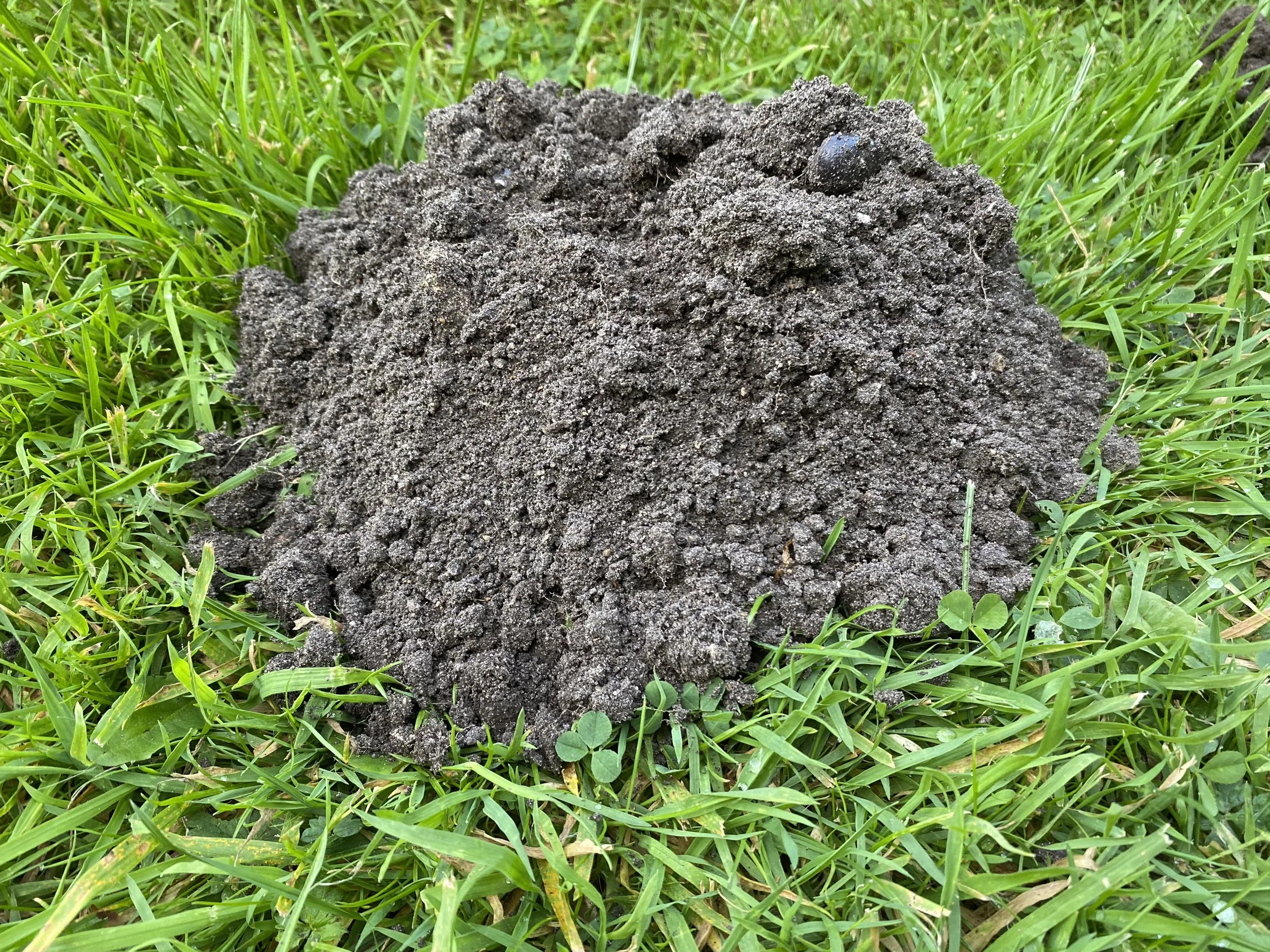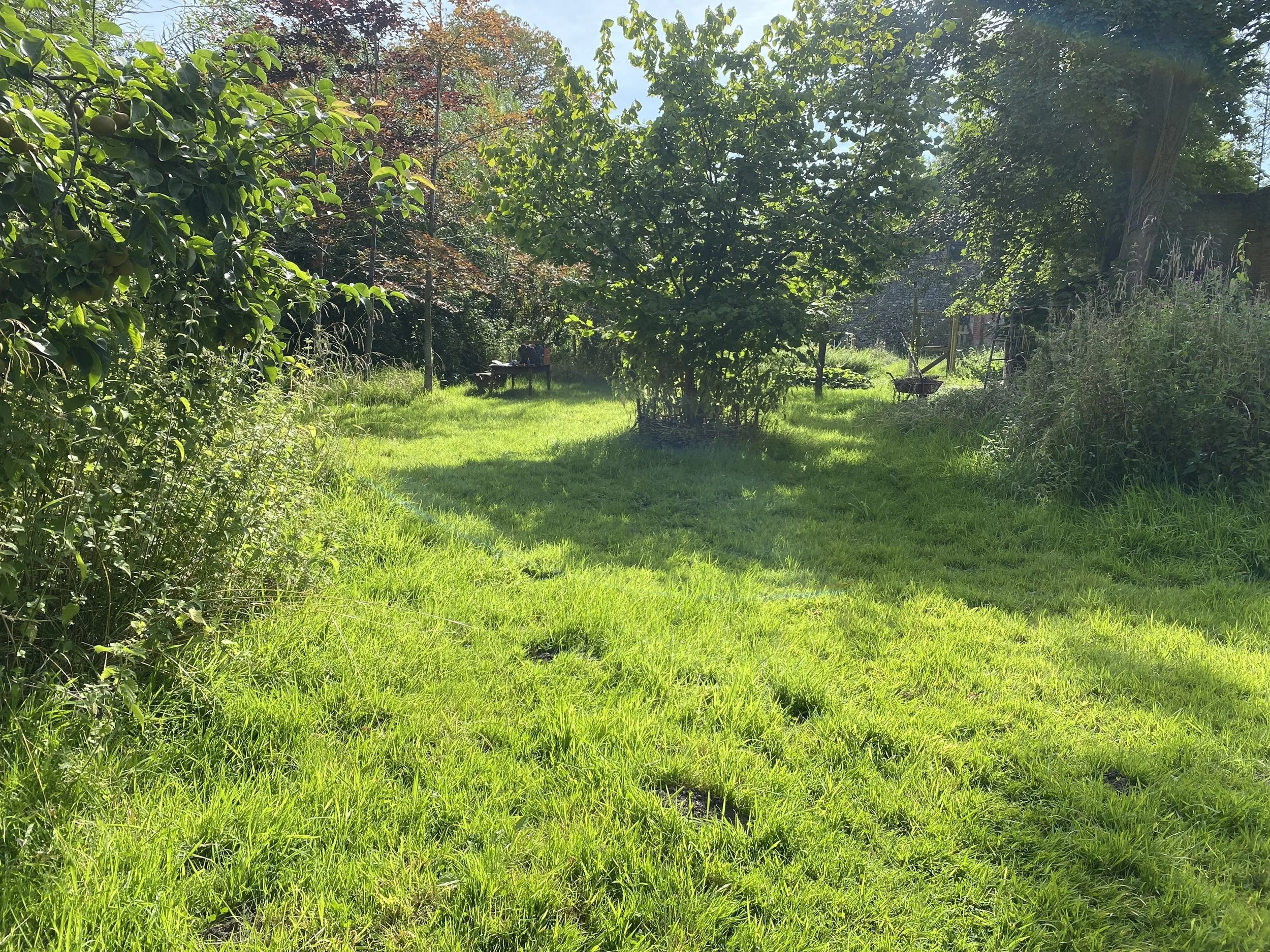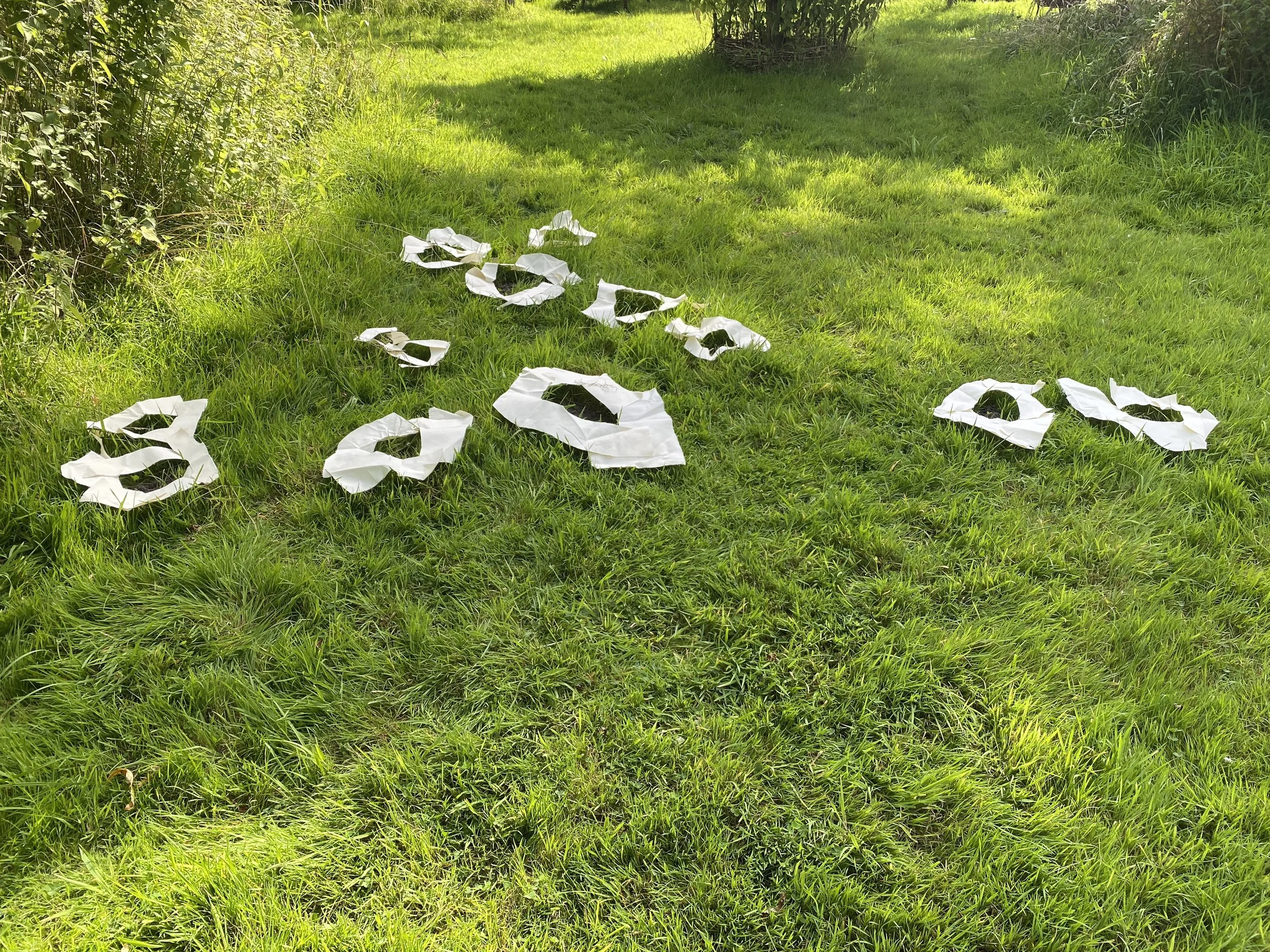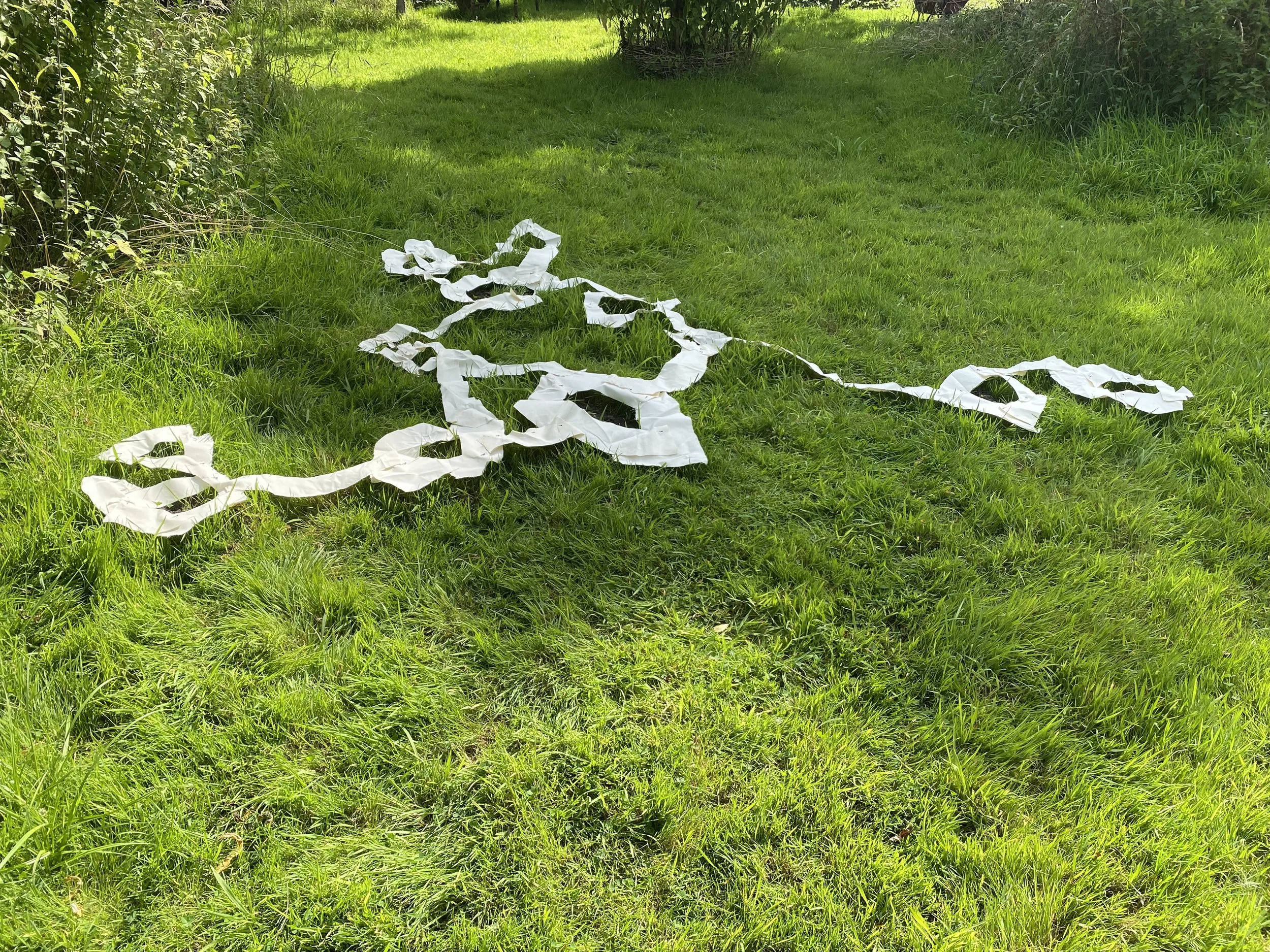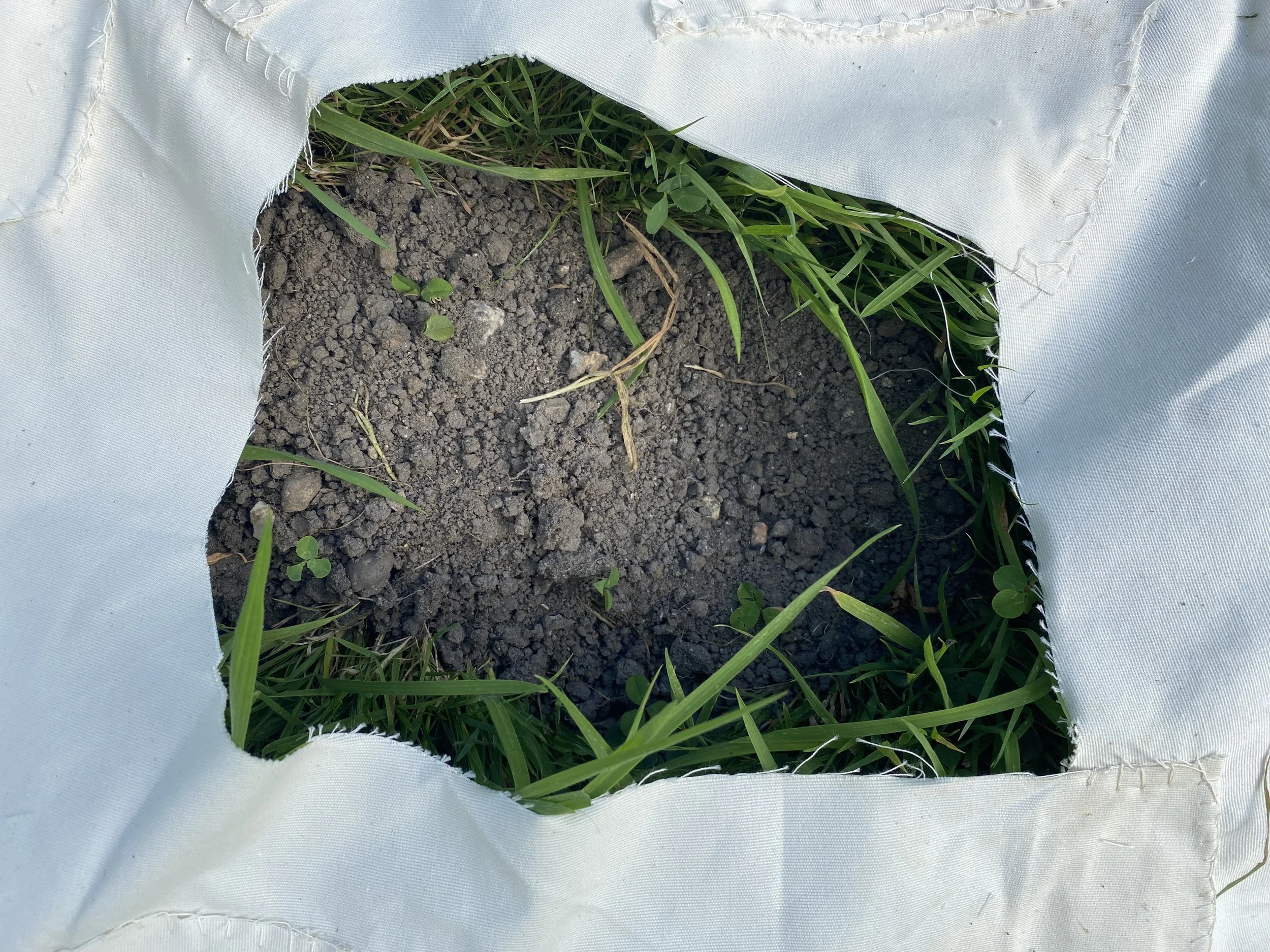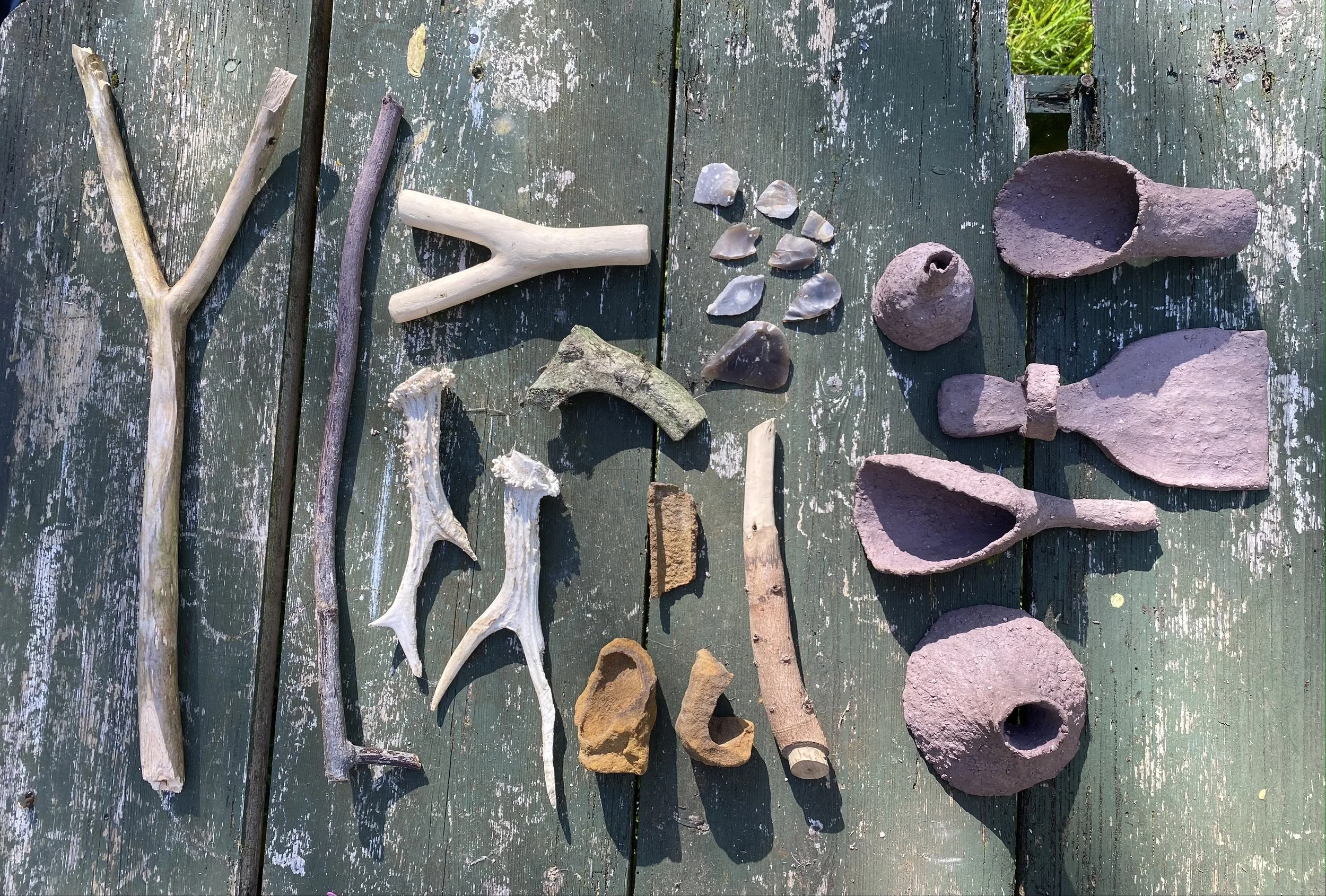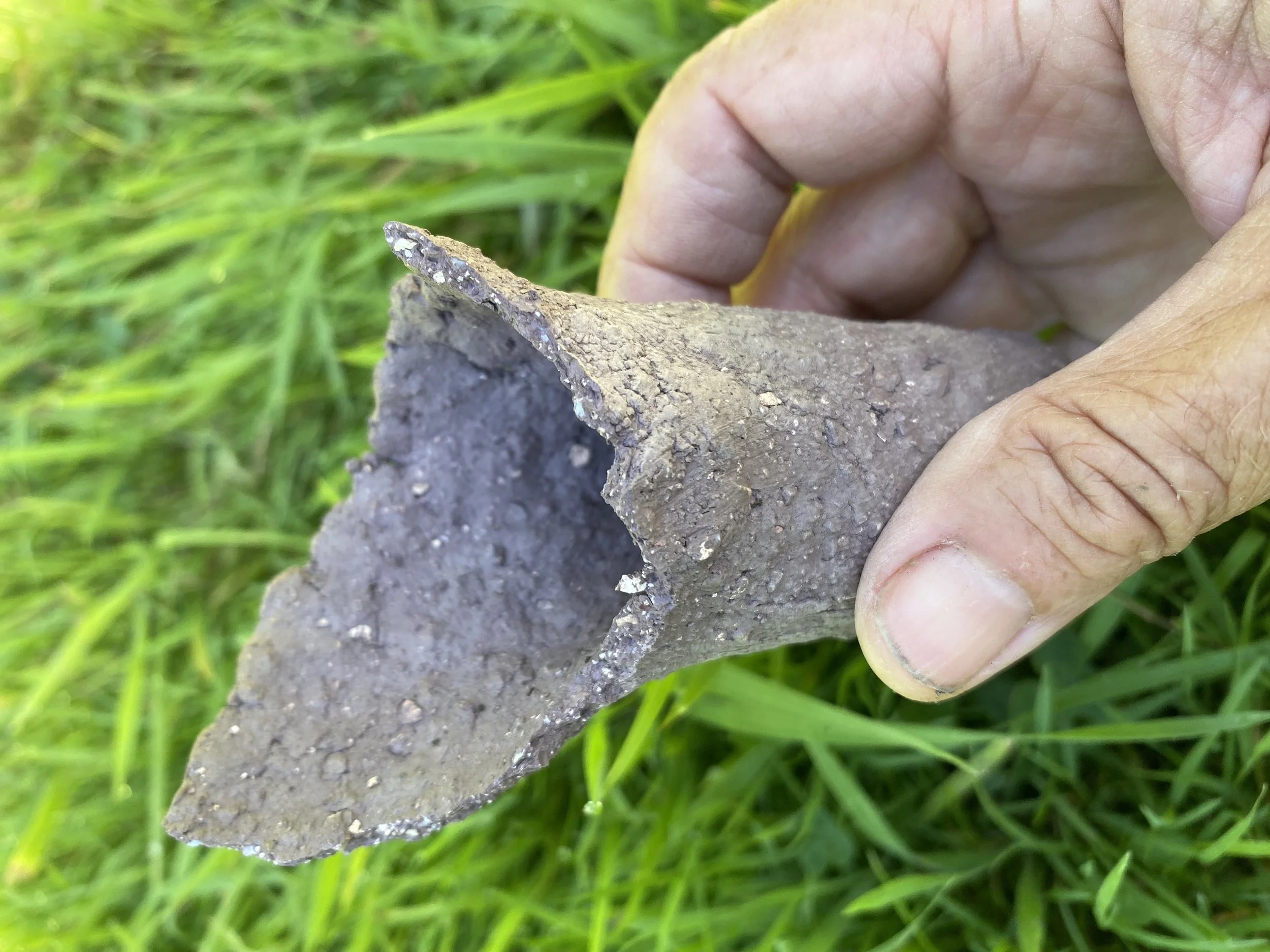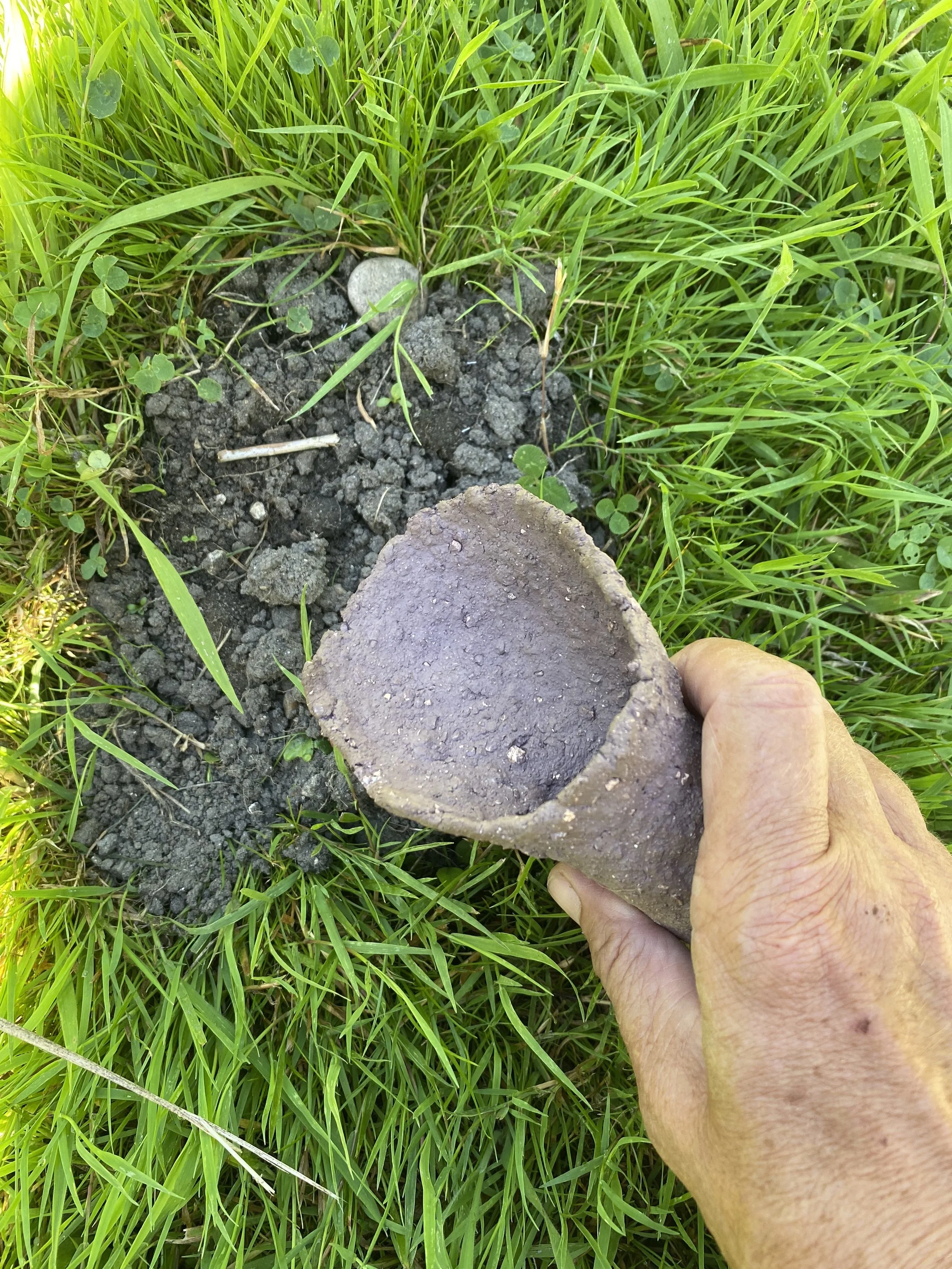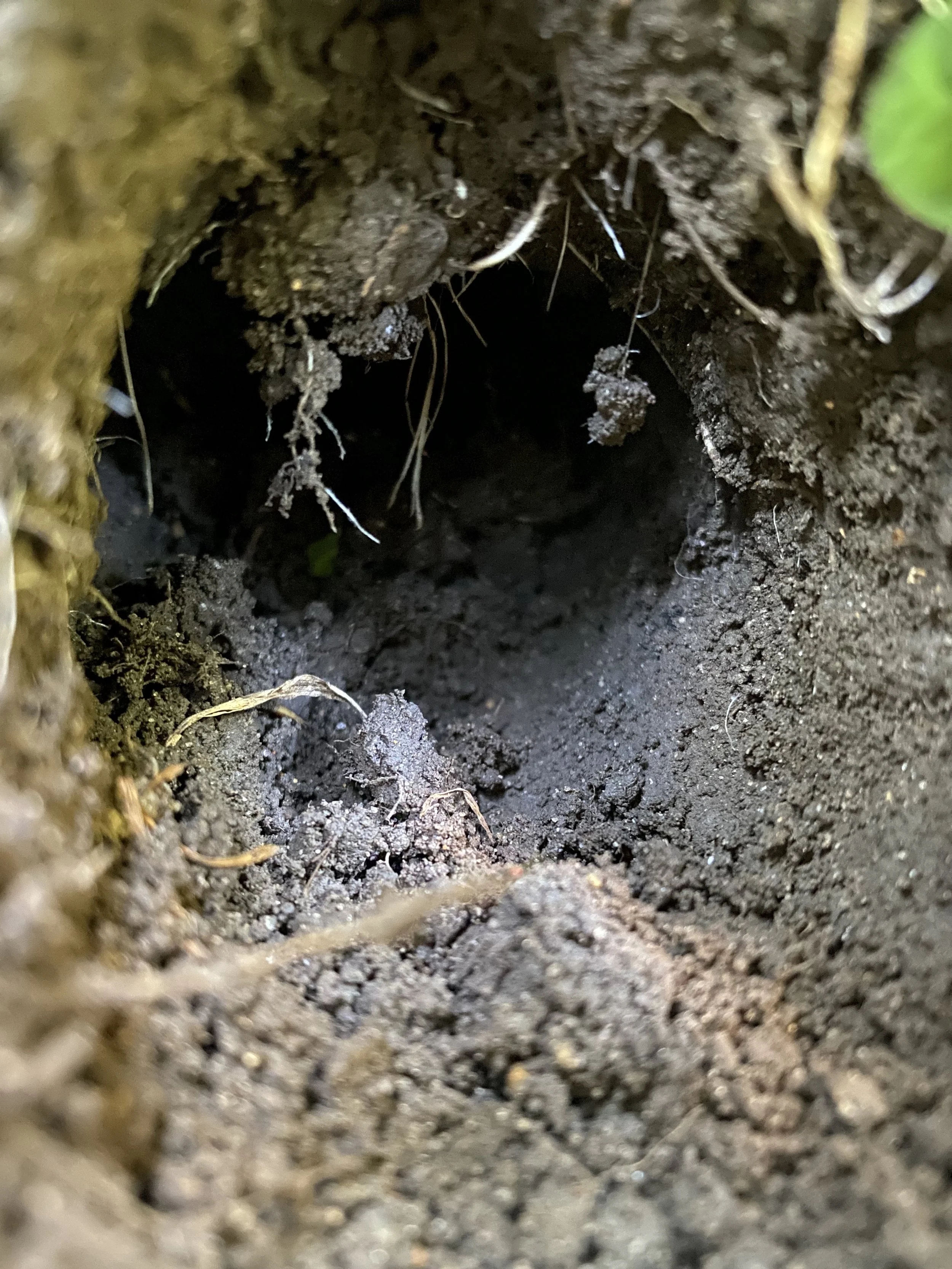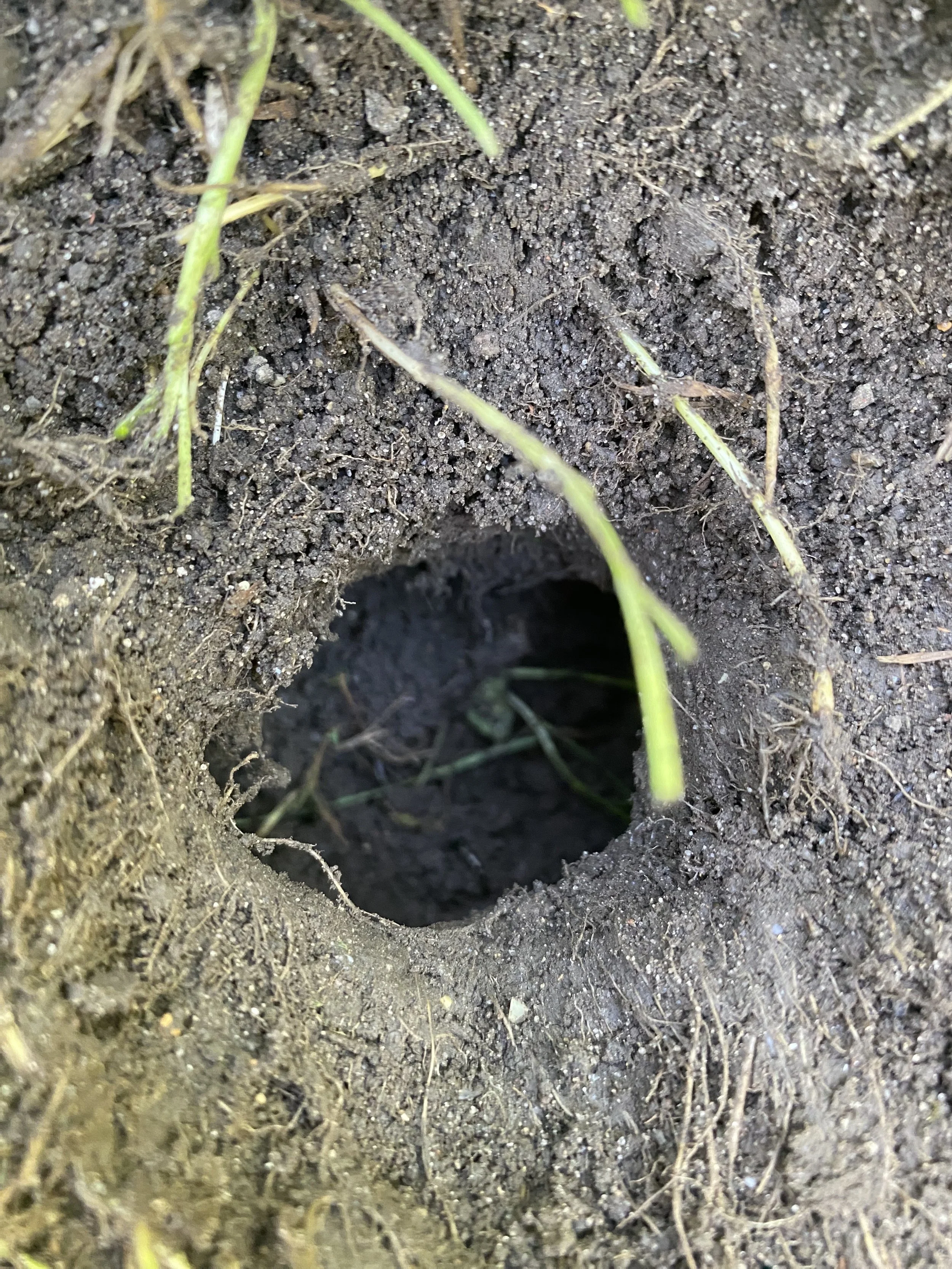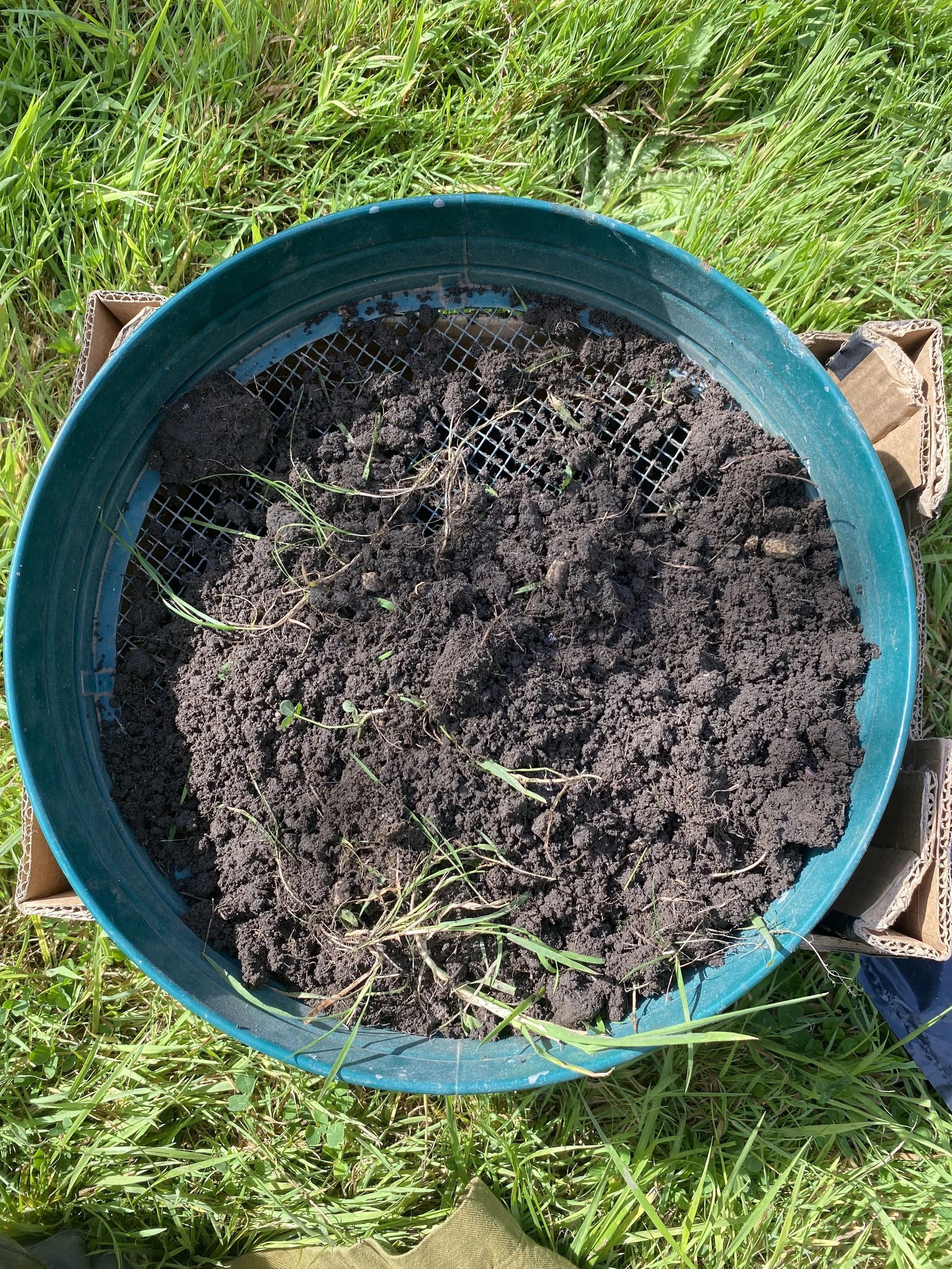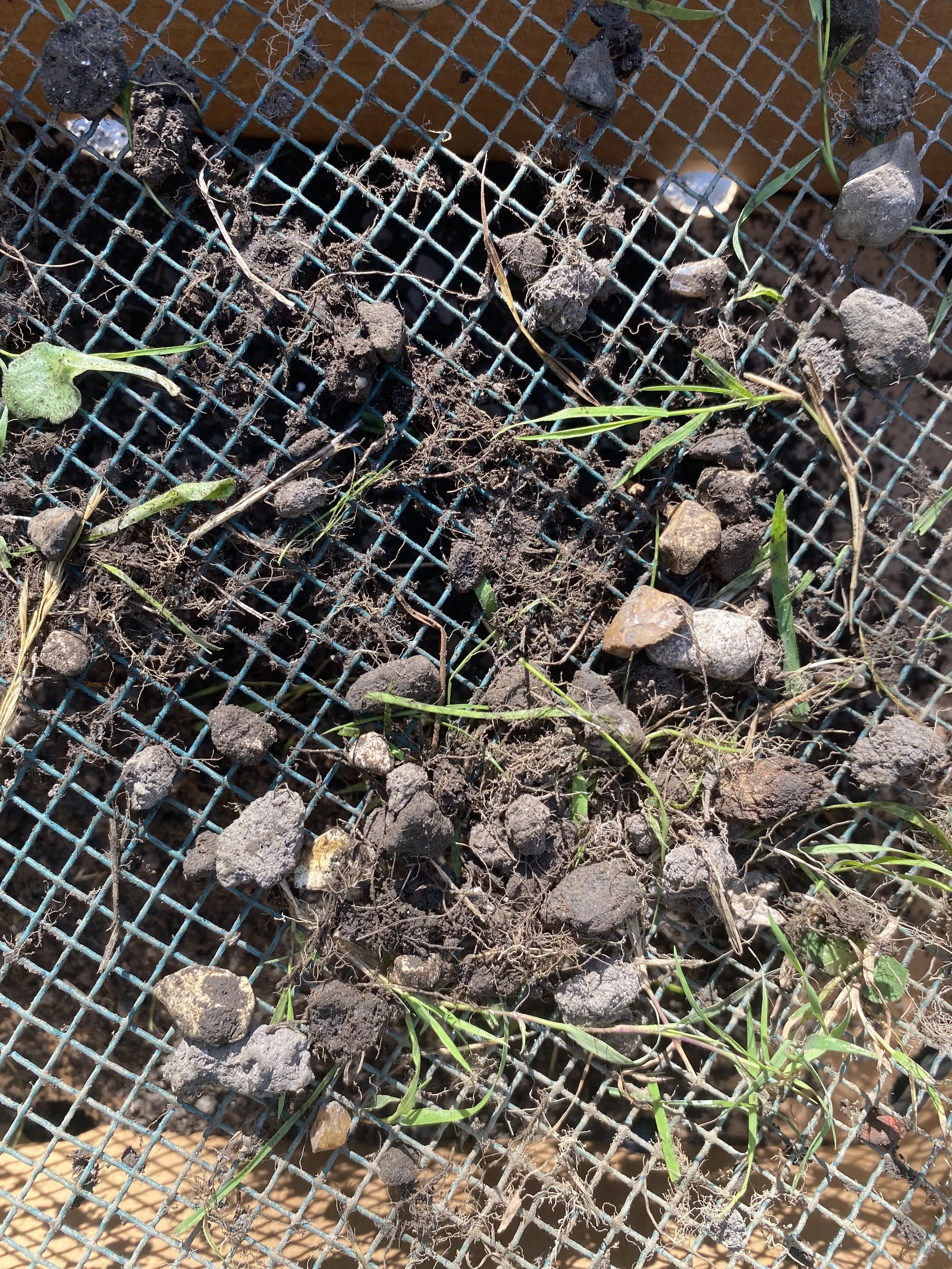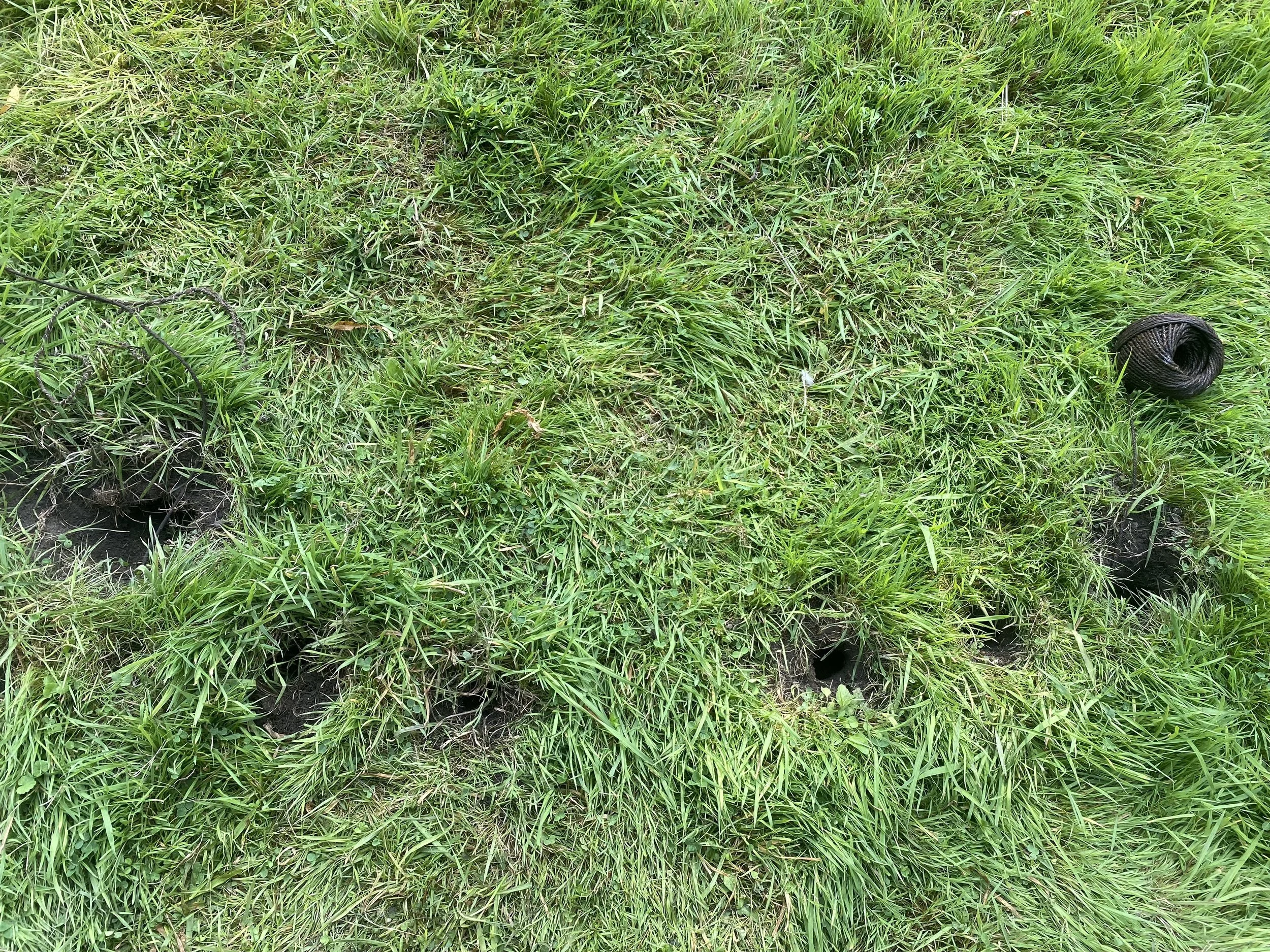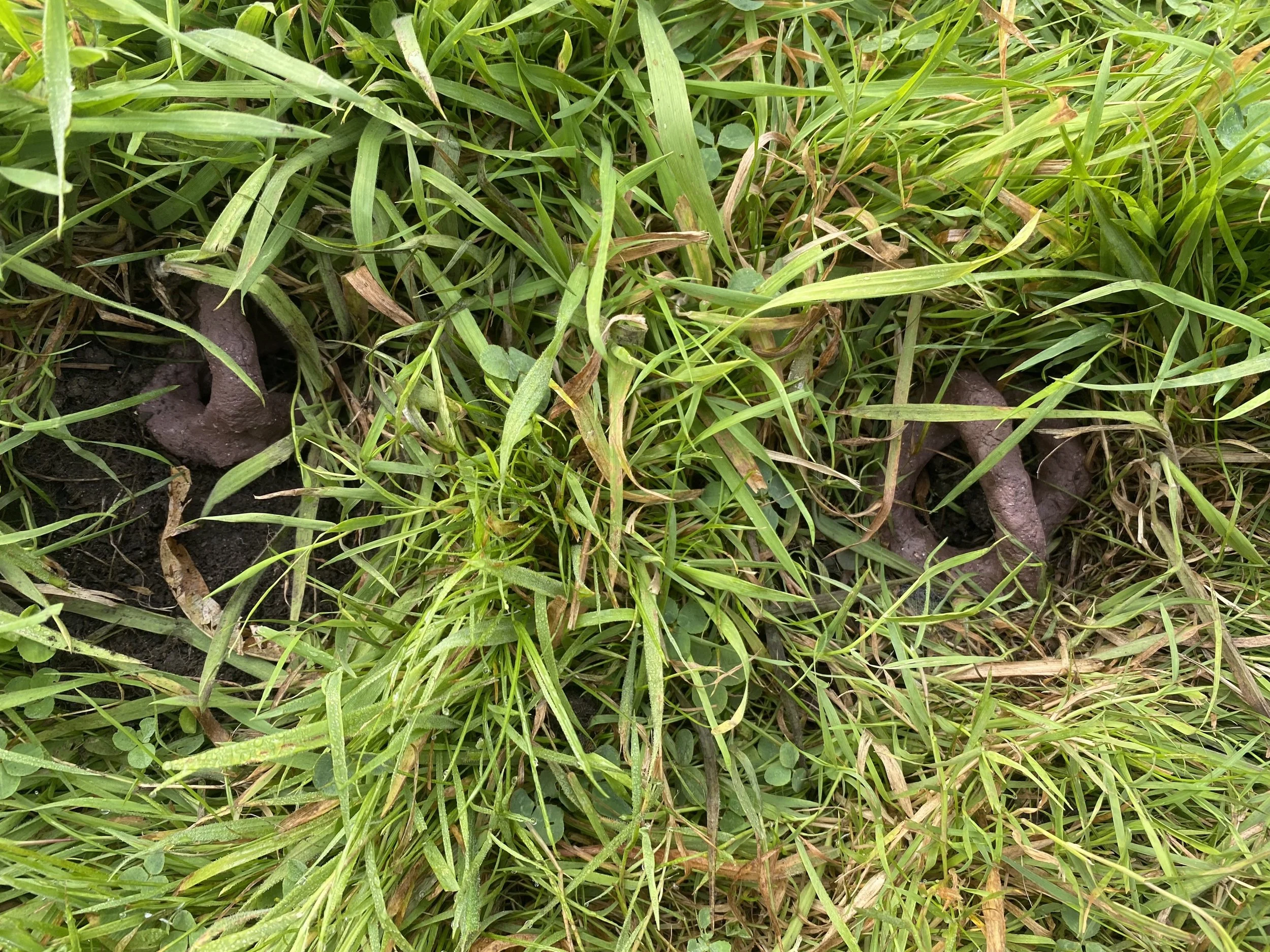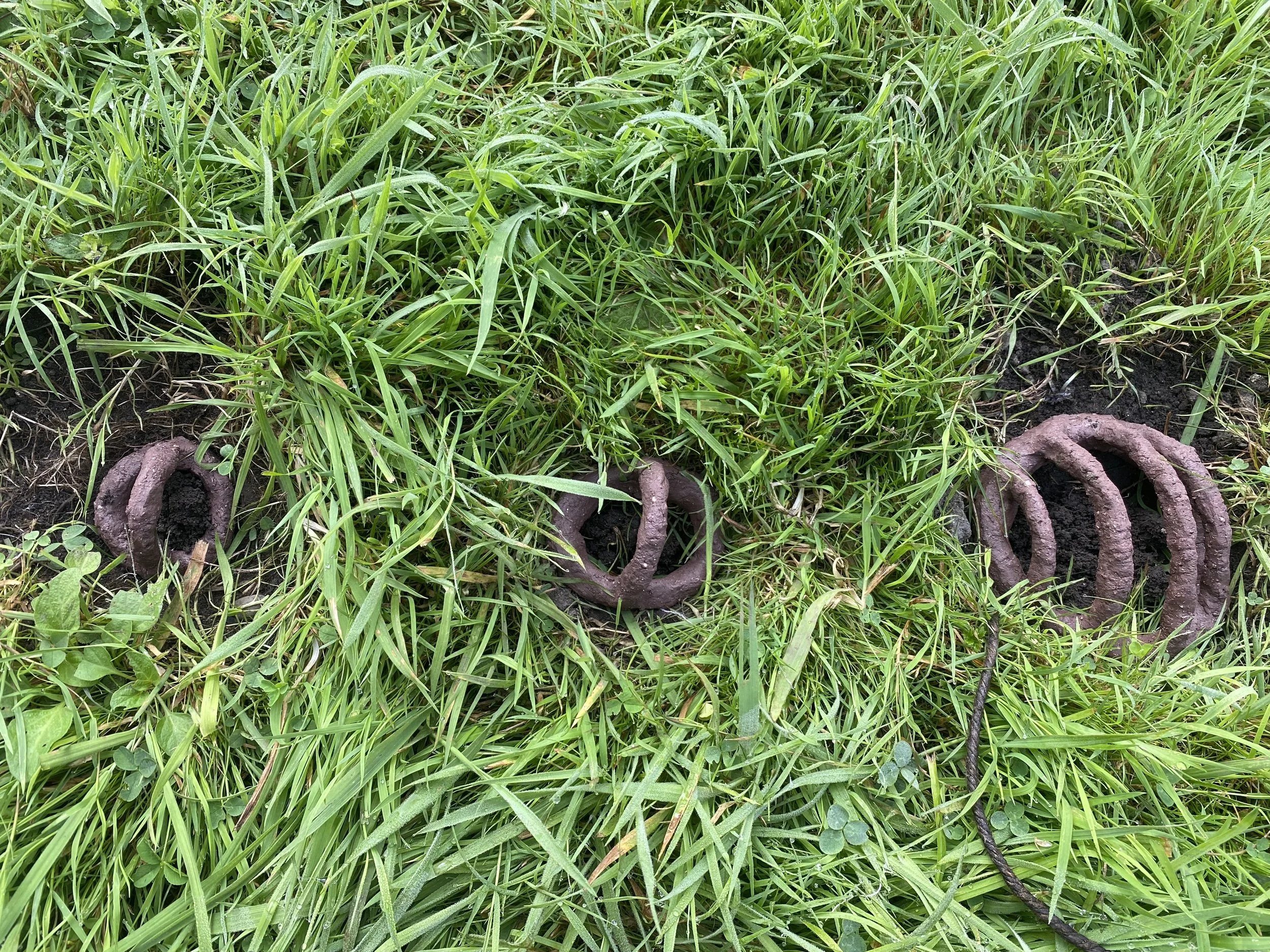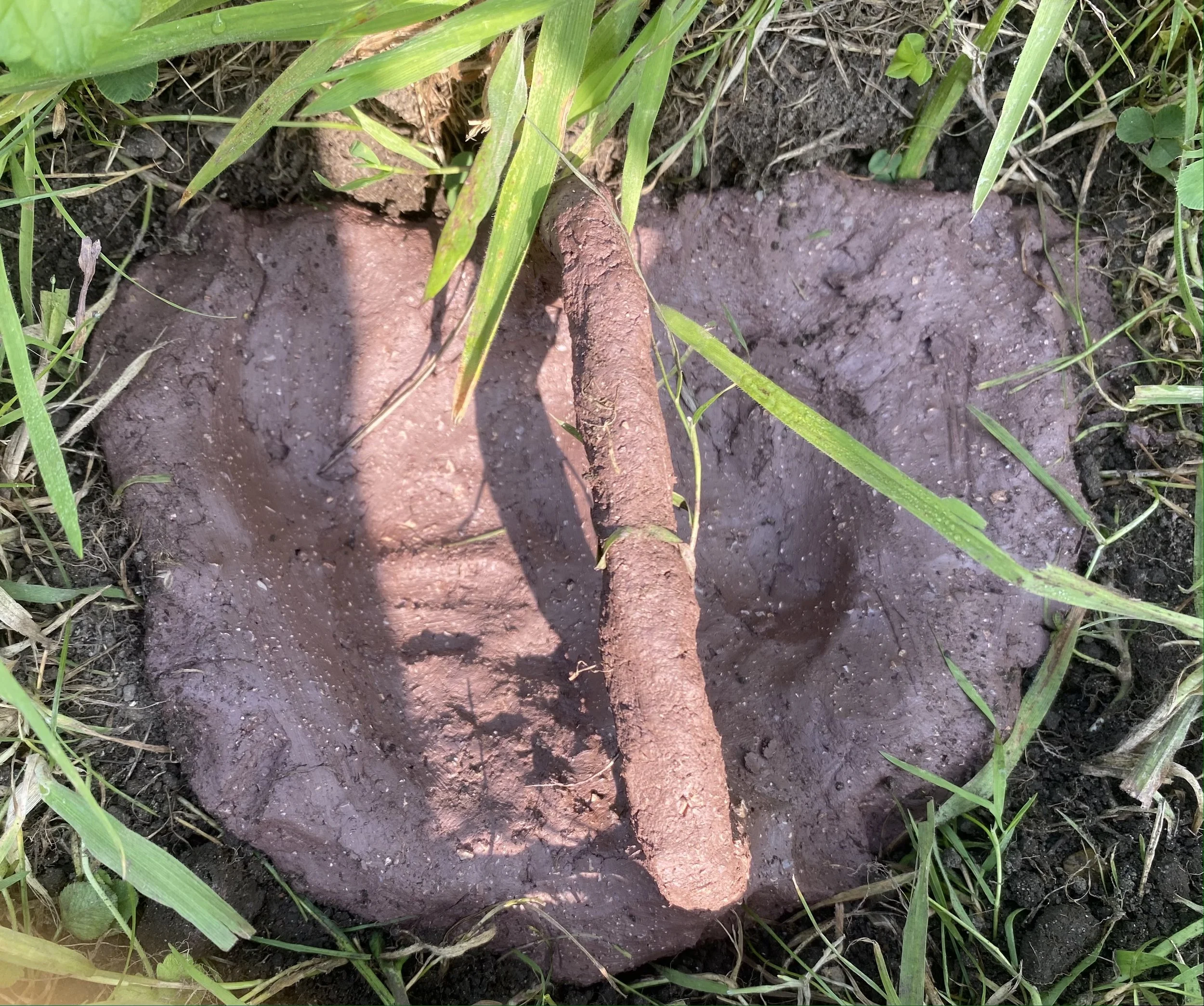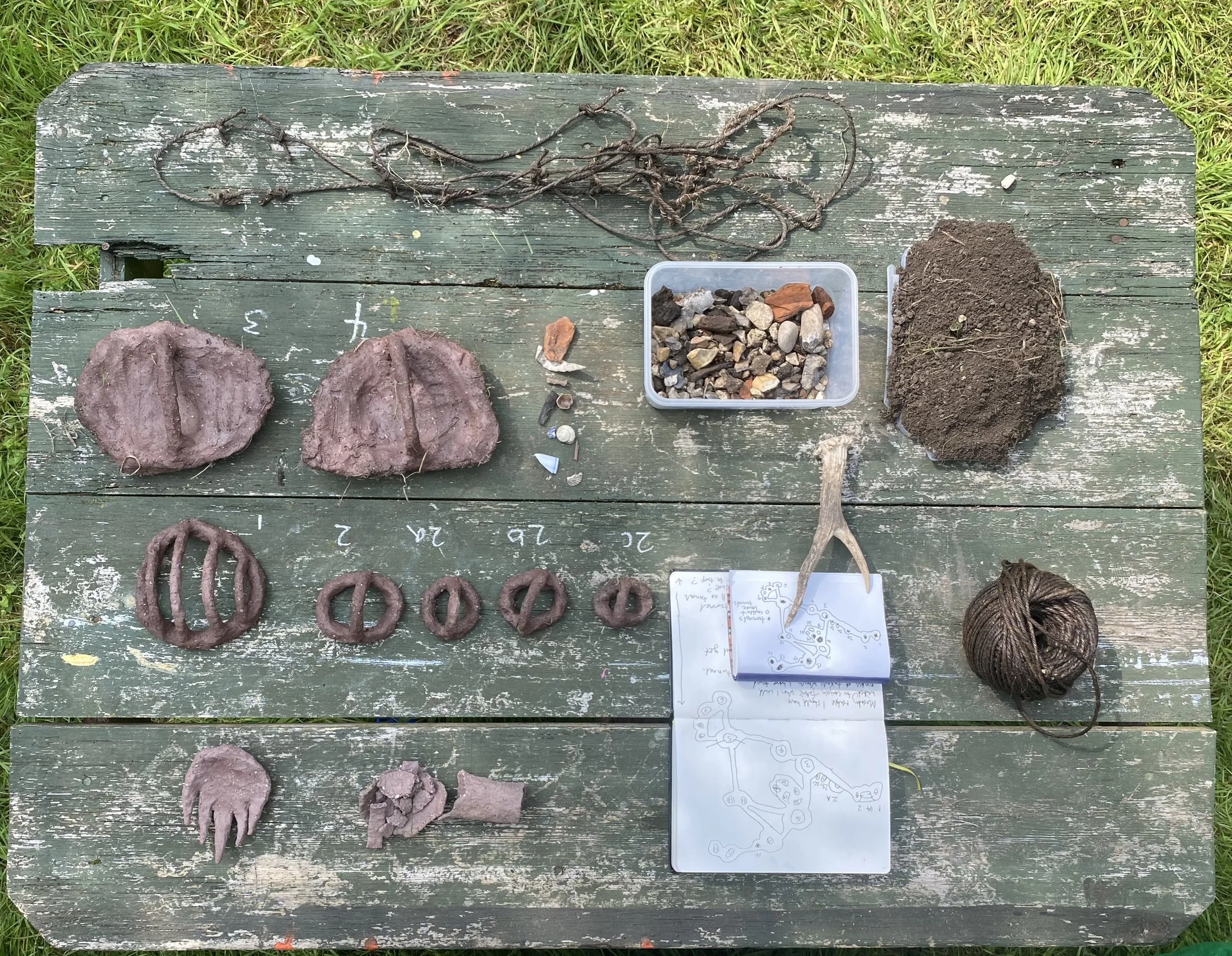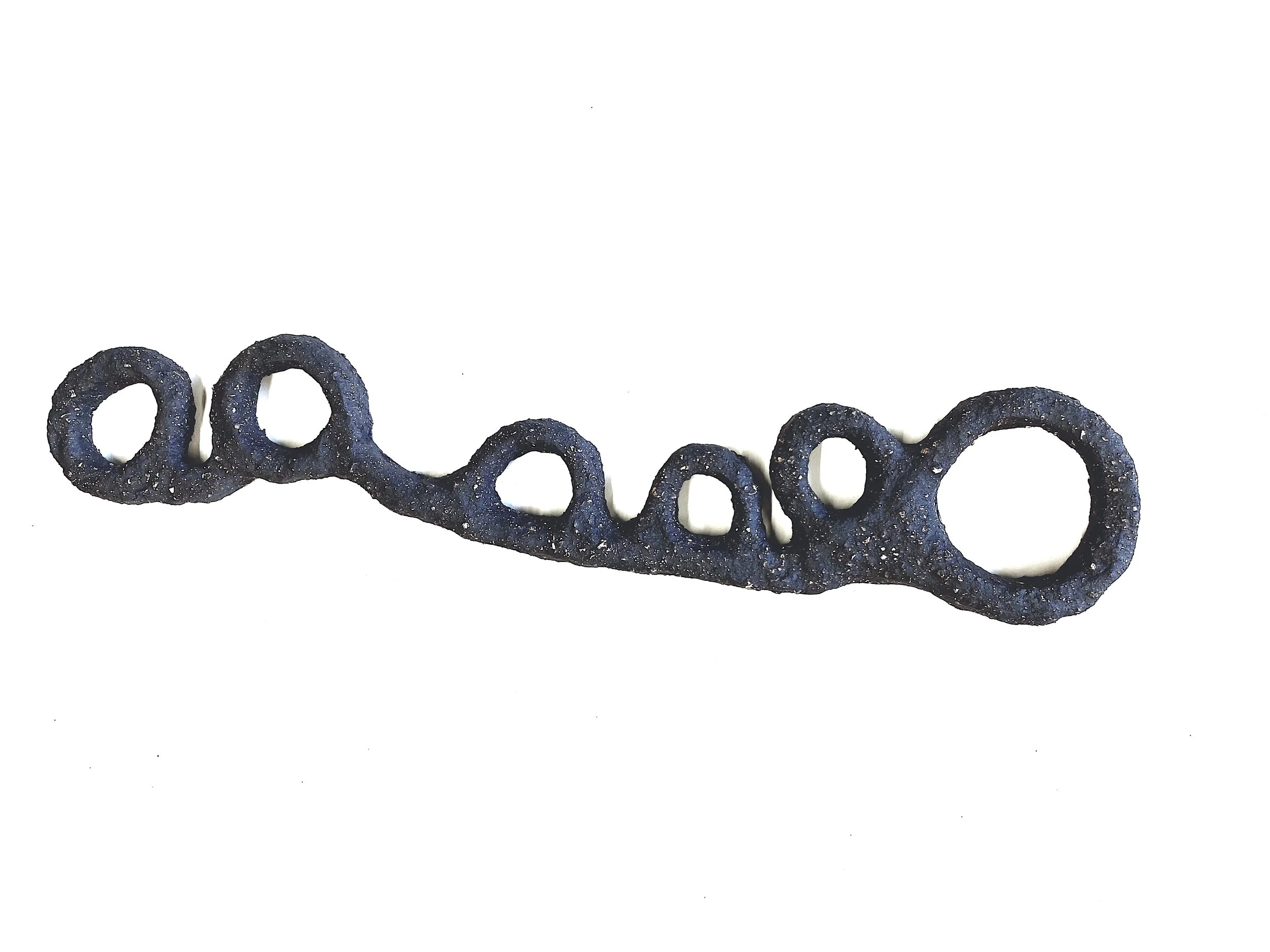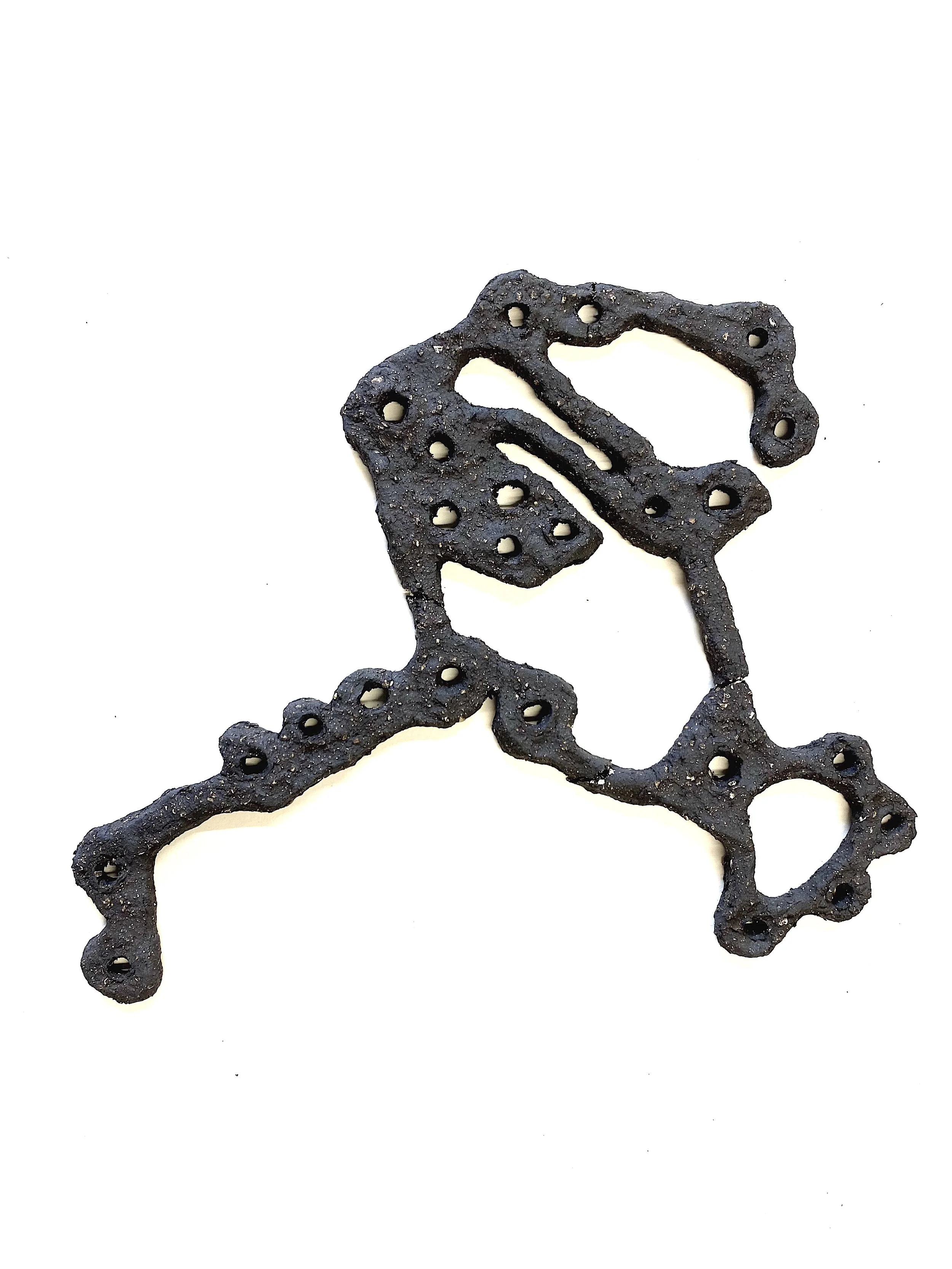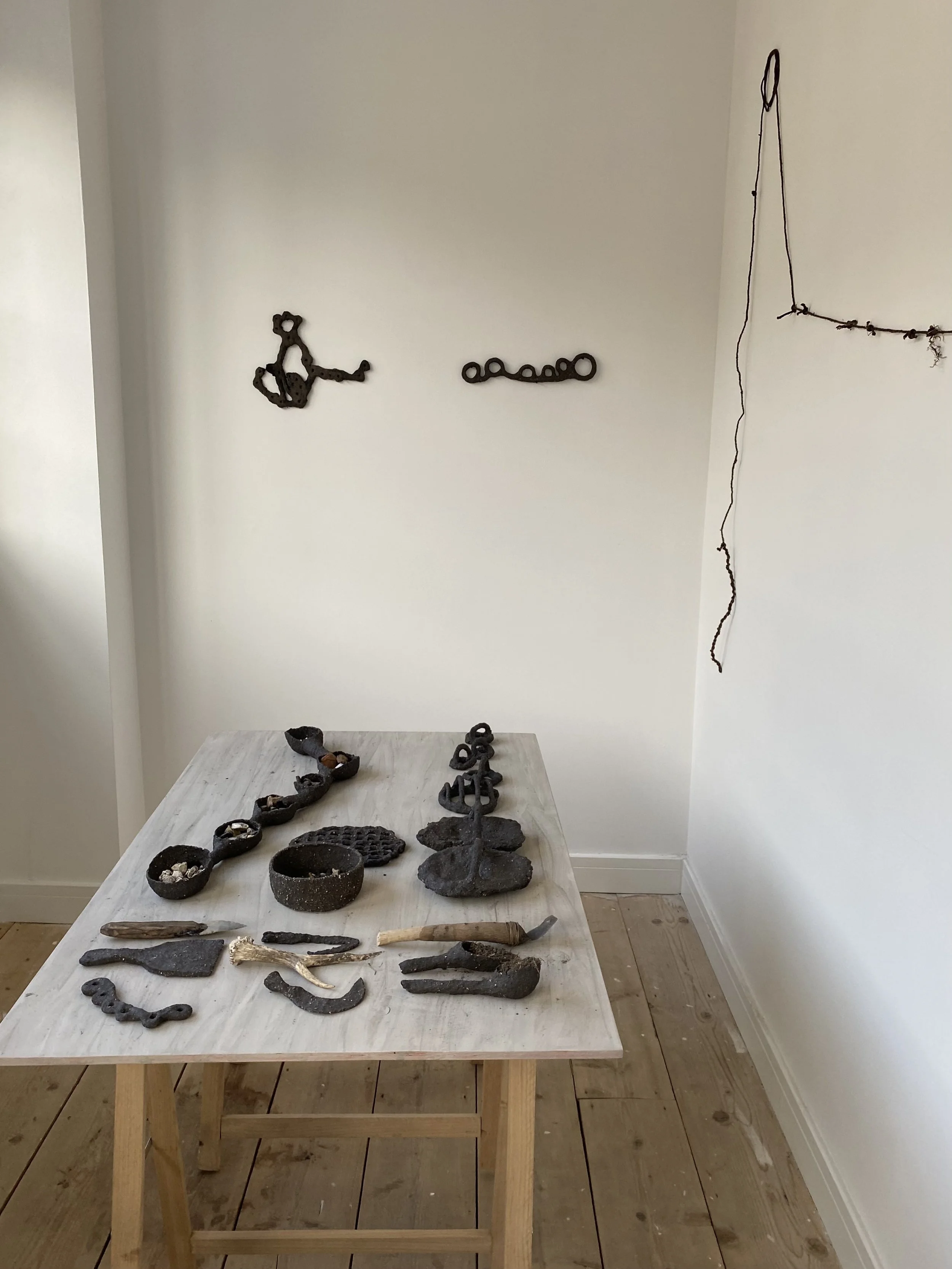Mouldiwarp
In August 2024 I spent a week at The Grange Projects in Norfolk as part of a GroundWorks Gallery extraction residency. Having done some preliminary research into ancient chalk mines and tunnels in Norfolk, I wanted to excavate a hole myself to try and understand the diggers who hand dug those pits and shafts. I decided to start by excavating molehills. It seemed an apt metaphor- the origin of the name mole in Old English is mouldywarp or mouldiwarp, meaning “earth thrower”.
The Grange Projects have ten acres of grounds and were happy for me to use the molehills on their land for my research. I spent my first day plotting the longest continuous sequence of molehills I could find in the garden. I counted seventeen in one spot and ringed these with fabric which I sewed together and then connected with further strips of fabric. This was to keep a map record. By the next morning, seven more molehills had appeared in this area so I extended my textile map to twenty four holes.
I then started the process of excavating the molehills using a range of improvised tools I had grabbed from my studio including sticks, antlers, and unfired clay scoop prototypes. A clay scoop worked well initially but predictably broke after a while. After experimenting, I found that a combination of my hand scooping the earth, and an antler pick to gently probe for tunnels, worked the best. Using an antler reminded me of seeing the huge antlers used in the excavation of Grimes Graves, which I had visited just prior to arriving at The Grange.
Some of the molehills seem to be just spoil but in at least half I could feel underground chambers which connected the holes. It was amazing to touch the smooth and compacted walls that had been dug, even though I felt rather like an enormous Alice (in Wonderland ) trying in vain to peer into a tiny mole world.
I found that by gently threading string through the underground chambers I managed to find a continuous route through six of them ( 1, 2, 2a, 2b, 2c, 3 on my map). I didn't have time during the residency to explore all the holes I had excavated and mapped. The map I drew seemed analogous with that of hidden chalk tunnels in Norwich-which I was hoping to explore (I had been unable to find any means of doing this, as they are sealed/ dangerous/ built over). The Norwich chalk workings that still exist have been capped, such as the Eaton chalk pit grill, as have some of the prehistoric mines at Grimes Graves. With these in mind, I put clay grills over the mole holes that contained accessible tunnels, and capped two that appeared to be dead ends.
The next morning I found that all the holes I had threaded string through and put grills on, had been re-excavated by the moles- a big two sharp clawed gesture to me I think! The string was left intact, albeit more earthy than before.
I panned the extracted spoil from the mole hills and made clay sieves for this purpose. At Epiacum, a Roman site near Alston in Cumbria, 37 volunteers were allowed (under strict supervision from English Heritage) to sieve the molehills on site. Humans are not allowed to dig here because Epiacum has protected status as an ancient monument, but the moles have so far uncovered Roman artefacts including a jet bead, a bronze dolphin fragment, and pottery shards. I was ridiculously pleased just to see a marble thrown up in molehill spoil in one of The Grange molehills!
At GroundWorks “Ground Up” exhibition in October 2024 I exhibited the clay experiments I made, now fired: the tool experiments, the caps and grills I placed over the mole hills I had connected through the underground mole tunnels, a clay map of the six mole hills I excavated, and a ceramic tunnel system inspired by the mole hills I excavated that I connected underground with my string. The ceramic tunnel structure contained some of the material I extracted after sieving the mole hill spoil- stones, some brick and ceramic shards, some sea shell fragments and snail shells, hazelnut shell, wood, and two pieces of plastic. I also displayed the string I used to thread through these mole holes, with the pairs of knots that are closer together marking the perimeter of each mole hole, and the wider gaps between these denoting the distance of the tunnels conjoining the holes.
One of The Grange molehills
Molehill location
Identifying molehills
Textile map of mole hills
Textile marking molehill
Sketch map of molehills
Potential excavation tools
Antler pick
Broken clay excavator tool
Unfired clay excavation tool
Scraping earth by hand
Into mole tunnel
Molehill chamber entrance
Seiving earth from molehills
Seived molehill spoil
Marble on molehill
String threaded through molehills
Grills over molehill entrances
Grills over molehills with tunnels beneath
Molehill cap
Residency outcomes
Clay map of the six interlinked molehills
Clay map of the molehill sequence
String map of the six molehills
Fired molehill caps
Mouldiwarp clay maps of molehill sequence and string maps
Mouldiwarp display
English Heritage volunteers sifting molehills at Epiacum
Molehill chambers
String through molehill chambers
More Work:
